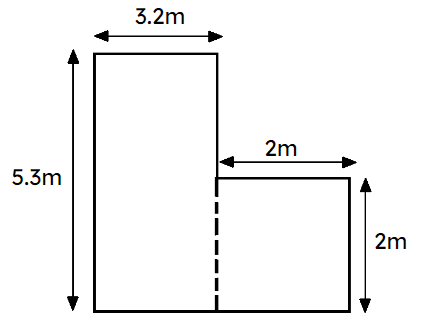Myths about teaching can hold you back


- Year 8
Using inequality notation for errors in calculations
I can use inequality notation a ≤ x < b to express errors in calculations.


- Year 8
Using inequality notation for errors in calculations
I can use inequality notation a ≤ x < b to express errors in calculations.
These resources were made for remote use during the pandemic, not classroom teaching.
Switch to our new teaching resources now - designed by teachers and leading subject experts, and tested in classrooms.
Lesson details
Key learning points
- You can use the values of a and b to see what the biggest and smallest answers to a calculation could have been.
- The range of possible answers is the error interval.
Keywords
Error interval - An error interval for a number $$x$$ shows the range of possible values of $$x$$. It is written as an inequality $$a ≤ x < b$$
Common misconception
When subtracting or dividing, the largest value is found by subtracting or dividing the upper limit of a number by the upper limit of the divisor or additive inverse.
Drawing a number line to show with subtraction will help students see how to achieve an upper or lower limits of an error interval calculation. When using division, reiterating the division of number is the same as multiplying by its reciprocal.
To help you plan your year 8 maths lesson on: Using inequality notation for errors in calculations, download all teaching resources for free and adapt to suit your pupils' needs...
To help you plan your year 8 maths lesson on: Using inequality notation for errors in calculations, download all teaching resources for free and adapt to suit your pupils' needs.
The starter quiz will activate and check your pupils' prior knowledge, with versions available both with and without answers in PDF format.
We use learning cycles to break down learning into key concepts or ideas linked to the learning outcome. Each learning cycle features explanations with checks for understanding and practice tasks with feedback. All of this is found in our slide decks, ready for you to download and edit. The practice tasks are also available as printable worksheets and some lessons have additional materials with extra material you might need for teaching the lesson.
The assessment exit quiz will test your pupils' understanding of the key learning points.
Our video is a tool for planning, showing how other teachers might teach the lesson, offering helpful tips, modelled explanations and inspiration for your own delivery in the classroom. Plus, you can set it as homework or revision for pupils and keep their learning on track by sharing an online pupil version of this lesson.
Explore more key stage 3 maths lessons from the Estimation and rounding unit, dive into the full secondary maths curriculum, or learn more about lesson planning.

Equipment
Licence
Prior knowledge starter quiz
6 Questions
Q1.An error interval for a number $$x$$ shows the range of possible values of $$x$$. It is written as $$ a\leq x < b$$. Explain what this means.
Q2.When a number, $$x$$, is rounded to the nearest integer the result is 63. Select the numbers which complete the error interval for $$x$$: $$\square \leq x <\square$$
Q3.When a number, $$x$$, is rounded to the nearest integer the result is 5. Select the numbers which complete the error interval for $$x$$: $$\square \leq x <\square$$
Q4.When a number, $$x$$, is rounded to the nearest integer the result is 10. Select the numbers which complete the error interval for $$x$$: $$\square \leq x <\square$$
Q5.Jun rounds a number to the nearest integer and the result is 5. Izzy rounds a number to 1 d.p. and the result is 5.0. Jun says, "We must both have rounded the same number." Is Jun correct?
Q6.$$x$$ and $$y$$ are both integers. $$x$$ = 650 (rounded to the nearest 10) and $$y$$ = 800 (rounded to the nearest 100). The greatest possible integer value of $$x+y$$ is .
Assessment exit quiz
6 Questions
Q1.__________ are the digits in a number that contribute to the accuracy of the number. The first significant figure is the first non-zero digit.
Q2.When a number, $$x$$, is rounded to the nearest integer the result is 35. Select the numbers which complete the error interval for $$x$$: $$\square \leq x <\square$$
Q3.A long road is made up of 3 sub roads. The 1st road measures 35 m (2 s.f), the 2nd road is 41 m (2 s.f) and the 3rd road is 48 m (2 s.f). Find the error interval for the length $$x$$ of the long road.
Q4.A wall is in an L-shape. All the lengths are given to 1 d.p or the nearest integer. Work out the error interval for the area of the wall.


